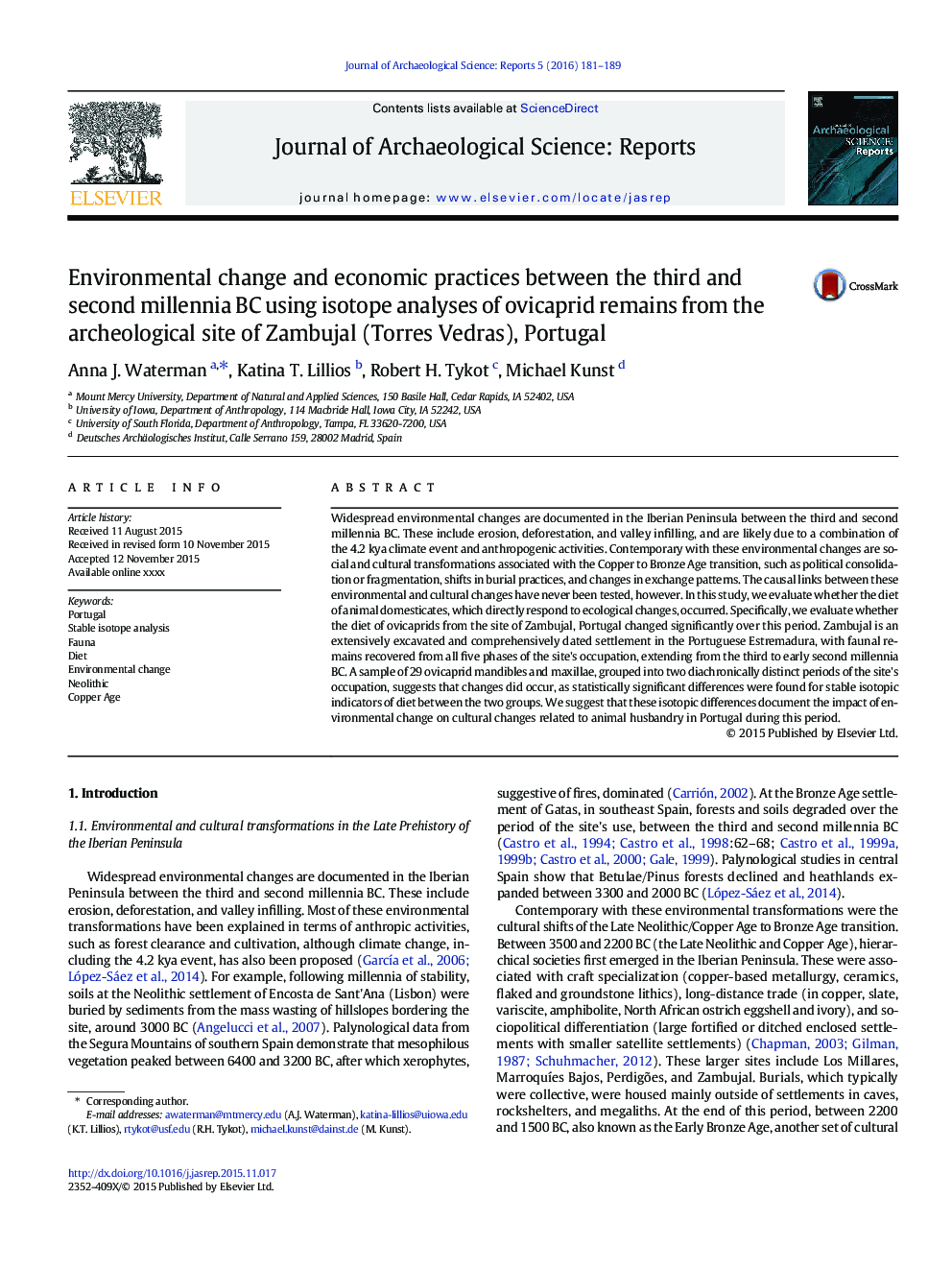| Article ID | Journal | Published Year | Pages | File Type |
|---|---|---|---|---|
| 7445987 | Journal of Archaeological Science: Reports | 2016 | 9 Pages |
Abstract
Widespread environmental changes are documented in the Iberian Peninsula between the third and second millennia BC. These include erosion, deforestation, and valley infilling, and are likely due to a combination of the 4.2Â kya climate event and anthropogenic activities. Contemporary with these environmental changes are social and cultural transformations associated with the Copper to Bronze Age transition, such as political consolidation or fragmentation, shifts in burial practices, and changes in exchange patterns. The causal links between these environmental and cultural changes have never been tested, however. In this study, we evaluate whether the diet of animal domesticates, which directly respond to ecological changes, occurred. Specifically, we evaluate whether the diet of ovicaprids from the site of Zambujal, Portugal changed significantly over this period. Zambujal is an extensively excavated and comprehensively dated settlement in the Portuguese Estremadura, with faunal remains recovered from all five phases of the site's occupation, extending from the third to early second millennia BC. A sample of 29 ovicaprid mandibles and maxillae, grouped into two diachronically distinct periods of the site's occupation, suggests that changes did occur, as statistically significant differences were found for stable isotopic indicators of diet between the two groups. We suggest that these isotopic differences document the impact of environmental change on cultural changes related to animal husbandry in Portugal during this period.
Related Topics
Social Sciences and Humanities
Arts and Humanities
History
Authors
Anna J. Waterman, Katina T. Lillios, Robert H. Tykot, Michael Kunst,
